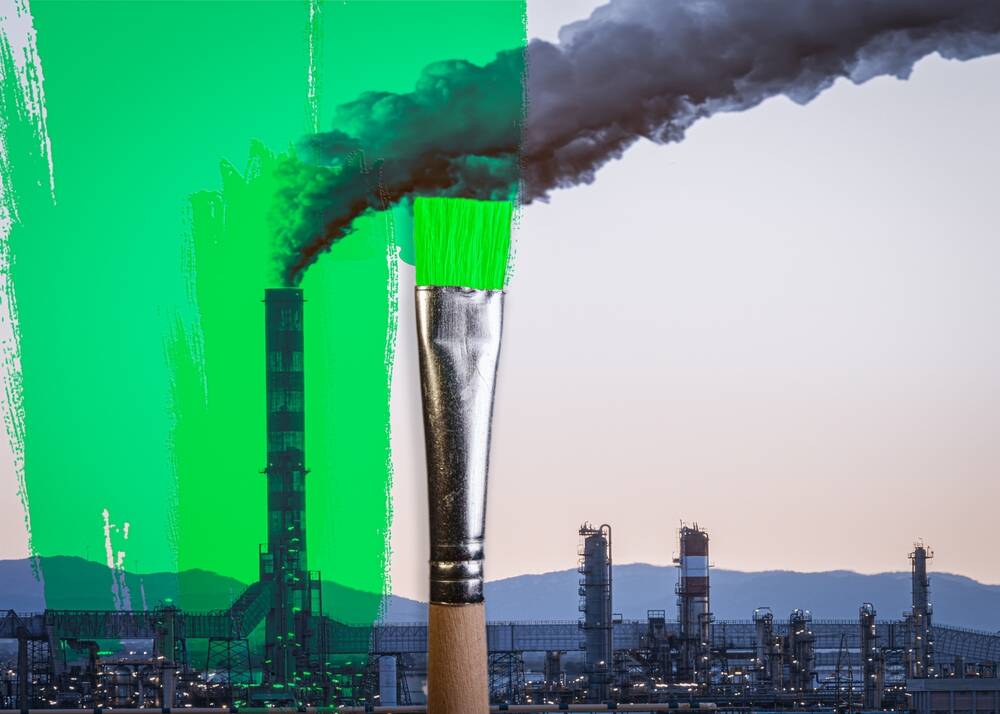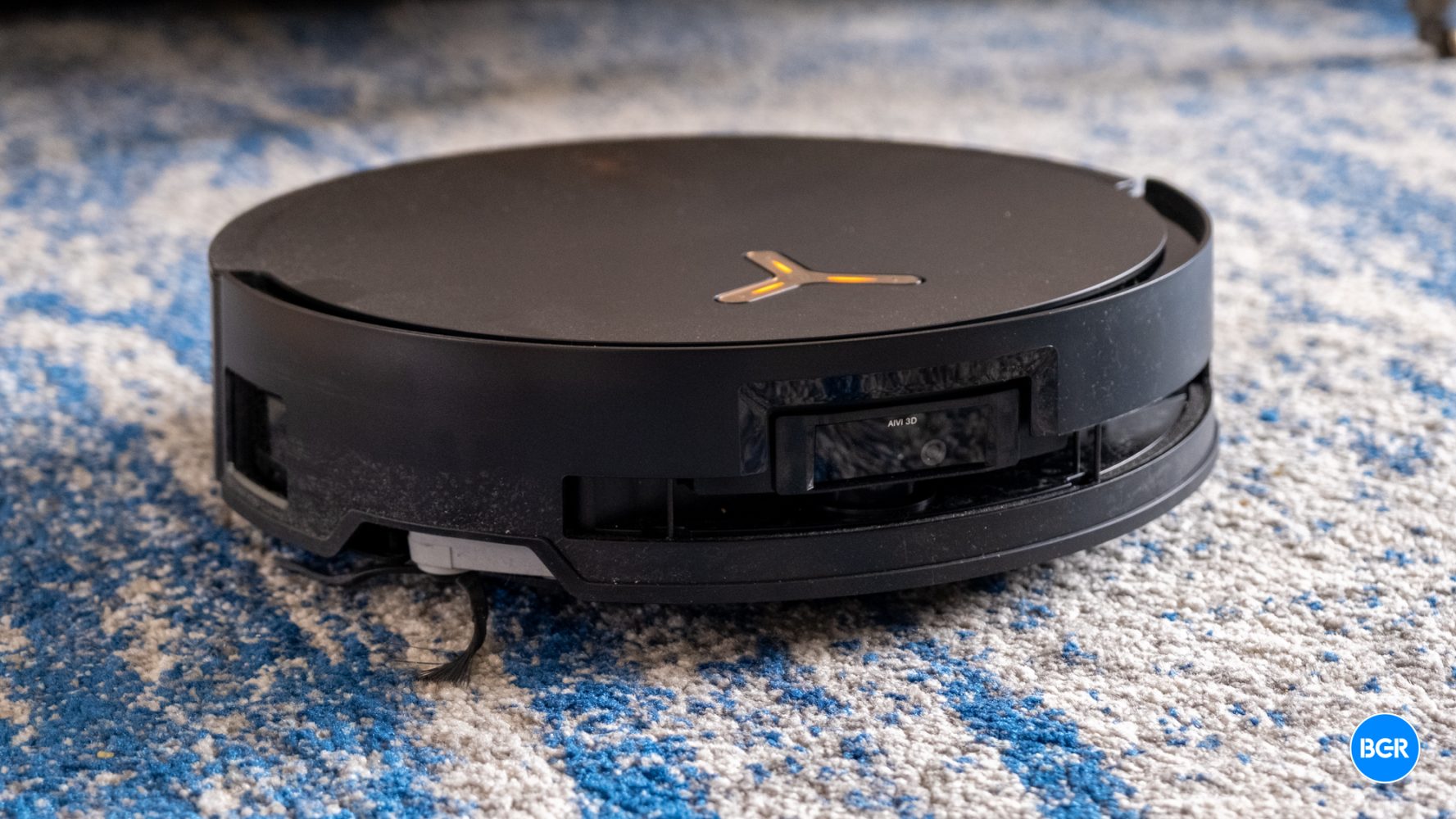Comment AI's appetite for power is exploding. Hyperscalers have only just begun to adopt Nvidia's 120 kW-per-rack systems, and the GPU giant is already charting a course toward 600 kW designs. Faced with that kind of surging demand, Big Tech's environmental sustainability pledges are starting to look less like strategy and more like a last-ditch Hail Mary.
By 2030, Microsoft has pledged to be carbon negative and Google has committed to a net-zero carbon footprint across its value chain. Meanwhile, e-commerce giant Amazon is taking a slightly longer road, targeting net-zero emissions by 2040. Laudable goals, sure, but as we've previously covered, the cloud titans' greenhouse gas emissions continue to grow year after year.

Last year, Microsoft revealed its CO 2 emissions had increased nearly 30 percent since 2020, while Amazon's and Google's were up 34.5 and 48 percent from 2019. Just how much of that is attributable to the AI boom, it's hard to say.
None of these companies break out their datacenter emissions — but it's hard to imagine the tens of thousands of power-hungry GPUs they've deployed over the past few years haven't made a sizable contribution. For context, as we reported earlier today, while datacenters are among the fastest-growing sources of emissions, their share of total energy sector emissions through 2035 is expected to be below 1.5 percent, according to the International Energy Agency.
That share ranges from 300 to 500 megatonnes. With that in mind, and whether or not you see Big Tech's eco-pledges to the world as more PR drives than anything else, the fact is they made those promises, and promises can be broken. And in an attempt to stick to those goals, hyperscalers are increasingly hedging their bets on ever-more exotic methods of offsetting the emissions of their ever-growing datacenter empires.
Earlier this month, Microsoft signed up for another bundle of carbon capture credits as part of a tie up with Terradot. Under the agreement, Terradot has committed to removing 12,000 tons of CO 2 gas from the Earth's atmosphere between 2026 and 2029 through a process called enhanced rock weathering (ERW). Theorized in the 1990s, the process involves using mineral reactions to sequester atmospheric carbon in rock.
This process normally happens naturally over the course of millions of years to form minerals, such as calcium carbonate. Startups like Terradot, however, aim to accelerate this process, hence the term "enhanced" rock weathering. As we understand it, Terradot achieves this speed up by spreading finely ground minerals over large swaths of land.
It's believed the larger surface area means the minerals can react with carbon absorbed by rainwater to form new carbon-rich minerals, potentially an order of magnitude faster. The collaboration builds on Microsoft's earlier carbon capture partnership with 1PointFive for 500,000 metric tons of CO 2 by 2030, using the company's direct air capture (DAC) approach to pull carbon from the air and store it in subsurface saltwater reservoirs. Microsoft is far from the only hyperscaler piling onto carbon capture.
Amazon has also been working with 1PointFive and CarbonCapture Inc going back to 2023. Meanwhile, last year Google tapped Startup Holocene's DAC tech to help it clean up its act sometime in the 2030s. However, the tech remains in its infancy.
As Climate researchers at MIT wrote in a 2023 article , while the idea behind enhanced rock weathering is sound, it is far from proven. One of the biggest challenges to ERW is that mining, grinding, and transporting rock requires a lot of energy. So, in order for ERW to have a net benefit, it needs to absorb more CO 2 than it generates.
There's some evidence to suggest that many of the best mineral candidates for ERW, like Olivine, could end up adding CO 2 to the atmosphere through secondary reactions with iron. DAC-based capture suffers from many of the same core challenges as the technique is far less effective than capturing carbon at its source, the researchers explained. "The concentration of CO 2 in the air is about 300 times less than in the smokestacks of power plants or industrial plants, making it much less efficient to capture.
Because of this, DAC is quite expensive today," they wrote in a blog post . However, many believe that given time the cost of DAC carbon capture will come down, with Google hoping to see DAC reach $100 per ton by the early 2030s. However, unless hyperscalers scale up their carbon capture investments, it's unlikely to make a significant dent, in terms of their promises.
In its most recent sustainability report , Microsoft said in 2023 alone it had contracted to capture 5 million metric tons of CO 2 over a 15-year period. That might sound great until you realize the Windows maker generated 17.2 million metric tons of CO 2 equivalent in fiscal year 2023 alone.
Of course, hyperscalers aren't putting all of their sustainability eggs in a carbon capture shared basket. They're also betting big on nuclear energy to offset their massive GPU deployments and bail out their carbon zero and negative targets. These investments range anywhere from behind-the-meter deployments at existing power plants and rehabbing old reactors, to hedging their bets on small modular reactors and full-on moonshot fusion power promises.
Two of the more realistic nuclear power datacenter projects are being led by Amazon and Microsoft. You may recall that early last year, the e-commerce turned cloud giant acquired Cumulus Data's atomic datacenters for $650 million. The acquisition brought AWS access to up to 960 megawatts of the Susquehanna nuclear power plant's total capacity, though since the announcement, the cloud provider has run into some speed bumps over just how much capacity it can actually claim.
Similarly, Microsoft late last summer teamed up with Constellation Energy to reignite the idled Three Mile Island Unit 1 nuclear plant as part of a 20-year power purchase agreement. Before its retirement, TMI Unit 1 had a generating capacity of 837 megawatts, with Microsoft expected to draw a large portion of that capacity to power its increasingly power-hungry AI infrastructure. Analysts believe the plant could curb carbon emissions in the region by as much as 3 million tons a year.
Microsoft was also one of the first to throw its weight behind small modular reactors (SMRs) — tiny nuclear fission systems capable of producing tens to hundreds of megawatts of power depending on the design. The idea is that Redmond could deploy a couple of these in the area surrounding new datacenter builds to offset their impact on the energy grid. In 2023, Microsoft posted positions for a program manager to oversee the deployment of SMRs and microreactors to power its growing cloud and AI businesses.
Since then Amazon and Google have announced plans to employ SMRs from X-Energy and Kairos Power, respectively. Even Oracle's Larry Ellison is getting in on the fun, boasting plans last year to deploy a trio of SMRs to power a gigawatt-scale AI datacenter. But if the idea of thousands of tiny atomic power plants dotting the countryside sounds far-fetched, SMRs aren't even the weirdest nuclear-themed hedge hyperscalers have made in recent years.
Back in 2023, Redmond optimistically signed up to purchase power from Sam Altman-backed fusion startup Helion Energy, which promised to begin delivering clean helium-3-based power in or about 2028. The only rub is that nearly two years later, and Helion still hasn't figured out how the whole power part of the equation. When we spoke with them in 2023, they assured us their latest generation reactor was on track to begin producing power by 2024.
Yet, as of January, the startup's reactor has yet to produce a meaningful number of electrons, much less the 50 megawatts of power promised. And herein lies the problem. While fusion energy, and SMRs for that matter, may be a long-term solution to hyperscalers' unrelenting energy demands, the technology is still years and years away from being a viable alternative to, say, fossil fuels.
Even Three Mile Island's Unit One fission reactor isn't expected to be fully operational until 2028, and the way things are going may only be enough to offset the energy demands of modern GPU-bit barns. Large-scale deployments of small modular reactors, meanwhile, aren't expected until the late 2020s or mid-2030s, depending on whom you ask. Google's SMR supplier doesn't expect to have an operational fission reactor until at least 2030, while Amazon and X-Energy are looking at 2039.
Even then the economics of SMRs remain dicey with some arguing the technology is "too expensive, too slow to build, and too risky to play a significant role in transitioning away from fossil fuels." While the cloud giants wait for the power of the atom to have its second renaissance, they continue to dump considerable capital into solar and wind energy. Last month, Amazon racked up some 870 megawatts of wind and solar power purchase agreements across Spain, while Microsoft in February signed a power purchase agreement, or PPA, for 389 megawatts worth of solar power in the US.
Google, meanwhile, celebrated the end of 2024 by forming an alliance to build industrial parks powered by clean energy, presumably so it has a guilt-free place to put its datacenters. The challenge with wind and solar is that they aren't exactly conducive to running a facility requiring tens, hundreds or thousands of megawatts at all hours of the way. In the best-case scenario, it only generates peak power during daylight hours and wind when it's .
.. well, you know, blowing.
Hence the big batteries you see in the news, to store surplus power until it's needed. With that said, Google is also augmenting its power supply with geothermal energy. The plant developed by Fervo Energy, is expected to deliver up to 115MW of power when complete, which would have sounded like a lot three years ago, but doesn't even raise an eyebrow today.
So if wind and solar aren't enough and nuclear fusion and SMRs are still years away, what is there to be done? Well the AI bubble hasn't burst yet, so the strategy appears quite simple, albeit not exactly sustainable: "Burn baby burn." At the CERAWeek Global energy conference in Houston last month, Microsoft made it clear it wasn't above deploying more natural gas plants to meet its energy needs. Microsoft has previously funded generation plans in power-constrained locales like Dublin, where it operates a 170 megawatt gas plant.
Facebook's parent Meta has also embraced natural gas to fuel its own AI model development. The company's forthcoming datacenter campus in Louisiana will be powered by a new 2.2 gigawatt natural gas plant.
Meanwhile, developers in Pennsylvania announced plans to convert a former coal plant into a 4.5 gigawatt natural gas-fired datacenter campus. Suffice it to say, given the choice between sticking with their sustainability goals, or leading the AI race, we know which we'll be betting on.
®.
Technology

AI is making hyperscalers' sustainability pledges look more and more like a Hail Mary

Carbon capture, SMRs, fusion power - tech titans' climate strategies are packed with moon shots Comment AI's appetite for power is exploding. Hyperscalers have only just begun to adopt Nvidia's 120 kW-per-rack systems, and the GPU giant is already charting a course toward 600 kW designs....















